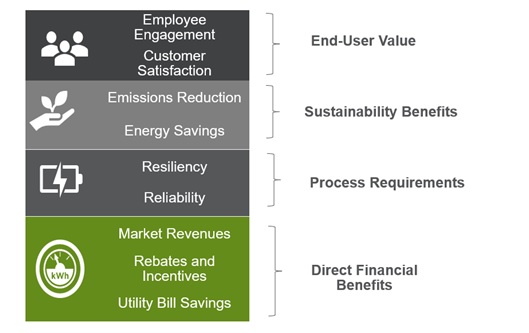- DER
- Demand Response
- solar PV
- Energy Technologies
Industrial Manufacturers Gain Onsite Energy Control through DER

The US Energy Information Administration found that the industrial sector was responsible for 40% of total energy consumption worldwide in 2018. Even in more service-oriented economies such as the US, the industrial sector continues to consume vast amounts of energy. Given their high energy use, industrial manufacturers use efficiency measures across verticals to lower utility bills, take advantage of rebates on equipment, and potentially help finance technology upgrades. A new report from Guidehouse Insights, DER Creates Onsite Energy Opportunities for Manufacturers,explores the distributed energy resource (DER)-based strategies industrial manufacturers may incorporate beyond traditional energy efficiency to take greater control of their facilities' energy use. As manufacturers have unique energy-related corporate staffing models, the report finds that DER providers should prepare to work with a variety of manufacturing stakeholders when designing onsite energy management strategies.
Industrial Manufacturing Has Much to Gain from DER Applications
While all industries stand to gain from the inclusion of energy technologies at their various sites, industrial manufacturing’s energy consumption patterns make it prime to take advantage of specific DER applications. Specific examples of DER combinations relevant to industrial manufacturers include the following:
- Solar PV and Demand Response (DR): Industrial manufacturers’ flexible loads can shift to take advantage of excess solar generation without disrupting production processes. Automated DR programs may help customers take advantage of time-of-use rates, peak-charge reduction, and other participation incentives.
- Energy Storage and DR: As lithium ion batteries become more prevalent on manufacturing campuses, they may discharge to support production processes during DR events where a company must reduce reliance on the energy grid.
- Solar PV and EV Supply Equipment: Companies looking to electrify their supply fleets may find that onsite PV can reduce costs associated with the charging of plug-in EVs. Fleet electrification may be necessary for manufacturers that provide companies with supply chain emissions targets (Scope 3). Solar canopies or rooftop PV can interconnect with onsite charging infrastructure to provide green fuel depending on geographic region and time of day.
Stacking DER Value Onsite Benefits Business
Where one or more DER are used onsite, companies can increase the benefits across a variety of internal segments including financial revenue, process requirements, sustainability benefits, and end-user value. The determination to use DER is largely made based on company finances, and these resources are more likely to be deployed where they provide positive returns or revenue streams to companies in under 5 years. By stacking value, manufacturers may be able to increase rates of return and secure longer-term benefits from the installation and application of DER.
DER Value Stacking Mechanisms for Industrial Manufacturers

(Source: Guidehouse Insights)
Industrial Manufacturers Have Unique Decision-Making Structures
In this second exploration of corporate onsite energy strategies, Guidehouse Insights notes that industrial manufacturers have complex decision-making structures. This distinct organizational structure is due in part to the greater energy load at each facility. As DER providers look to work with manufacturers, they must keep in mind that stakeholders internal to the company include corporate energy and sustainability managers, corporate engineers, corporate finance staff, and plant managers. As plant managers know a facility’s energy load patterns and operational requirements most intimately, their support is critical for launching innovative onsite energy projects. By iterating the ability to stack value across a variety of company-specific priority areas, Guidehouse Insights anticipates an evolution in energy management across sectors over the coming decade.